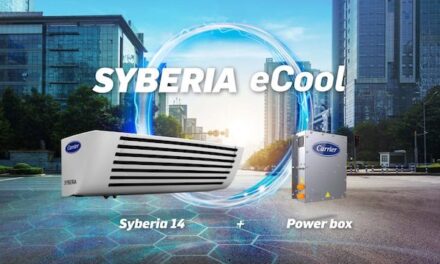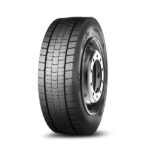Bio: Emily Newton is the Editor-in-Chief of Revolutionized, an online magazine exploring innovations in the industrial sector.
Electronic logging devices (ELDs), sometimes called digital tachographs, are essential equipment for all businesses operating in countries that mandate electronically tracking records of duty.
While industry regulations in most countries do not require purchasing a specific ELD, not all electronic logging devices are equal. There are hundreds of ELDs and tachographs on the market today. Many offer unique features and integrations that make them much more valuable than just another tool that ticks off a regulatory checkbox.
When buying an ELD, keeping a few key considerations in mind will help fleet managers find the system that best fits their needs while meeting local logging requirements.
Useful ELD Features and Tools
These are some common ELD features you may want to look for when shopping for an electronic logging solution. Before purchasing one, it’s important to know what features these devices come with and which may provide the most utility for your business.
Included Dashcam or Dashcam Integration
Some newer and higher-end ELDs include dashboard cameras that monitor the road during every drive. Dashcam footage can make logging easier — video proves the driver was on the road for the hours they log. It can also help managers better track unsafe behaviour.
Many new cameras also include systems that automatically scan for speeding, hard braking, sharp turns or distracted driving. These cameras may also uncover behaviours like idling, a major contributing factor to the supply chain’s production of carbon emissions.
The environmental impact of the fleet is often one of the top challenges modern logistics companies face. Dashcam driver behaviour monitoring can help managers mitigate this impact.
Dashcam footage can also be useful in the event of a traffic accident — footage from the camera can help insurers and police officers know exactly what happened.
User-Friendly Companion Smartphone App
Stand-alone ELD devices sometimes offer companion apps. They provide drivers with additional information, like alerts about impending violations or a countdown that tells drivers how many hours they have left before they’ll need to stop.
Some ELDs are entirely smartphone-based and do away with a separate device. Instead, they connect the phone directly to the truck’s ECM and provide the same information a typical ELD would on its screen.
Ideally, any ELD app a business plans to use will be compatible with Android and iPhone devices, so all fleet drivers can use it. Ease of use will also help ensure drivers can easily transfer records to enforcement officers. Difficulty in moving these records is a common ELD pitfall that all managers want to avoid.
Ease of Installation and Use
The best ELDs will be easy to install and for drivers to use. Adopting an ELD with user-friendliness in mind will help make it easier to train drivers in their use and ensure hours are properly logged.
Many have voice recognition features that allow for hands-free operation while a driver is in motion. Complex or difficult-to-navigate user interfaces can make an otherwise effective ELD much less useful.
Dedicated Customer Support Line Included
Like any piece of equipment, ELDs may fail. They could also behave unusually, be difficult to install in some cases or simply not be as user-friendly as the buyer had expected.
24/7 customer support lines, or a similar dedicated system, help ensure drivers and administrative staff can navigate these difficulties. The support line can walk users through basic troubleshooting or inform them about quality-of-life and management features they may have missed.
All-day availability also ensures drivers and support staff can access help, no matter when or where they run into a problem.
Ideally, the customer support team will serve drivers who speak languages other than English, ensuring a single solution can be used regardless of where a business operates or the languages a driver speaks.
Built-in GPS Tracking or Compatibility With Common Truck GPS Devices
Tracking features are essential for fleet managers. With a GPS or similar tool, managers can have real-time information about the location of their fleet, improving their ability to provide delivery estimates and schedule drivers.
New and improved telematics systems are a key vehicle fleet industry trend in 2021, and GPS is often key to their functionality.
By default, many modern ELDs that do not include GPS tools can be integrated directly with common truck devices. This allows them to take advantage of the navigation tools a business has already invested in.
Other Important Considerations for an ELD Purchase
When selecting a device, the ELD must provide features necessary to meet local and national regulations on logging driver hours. In the United Kingdom, HGV drivers and O-licence operators must use tachographs that log the following information:
Driver activity
Distance travelled
Date and time of each driver activity
Tachograph calibrations
Journey events, including card faults and any tampering with the system
Vehicle speed
Enforcement events
The number of times the driver card was inserted each day
Vehicle registration number
Tachographs may be digital or analogue in the U.K., so long as the device accurately gathers records on driver activity, speed and distance travelled. Digital tachographs are likely to be more convenient, but businesses may use analogue devices if desired.
Similar rules govern the information tachographs gather in the EU, as well as how drivers should use them.
Other countries may have different requirements as to what the ELD or tachograph must record. In the United States, drivers must use ELDs that meet the national motor carrier safety association’s rule on electronic logging:
- Account types for drivers and support personnel
- Timely power-on, within one minute of the vehicle starting
- Data recording and logging
- Secure date and time recording
- Geolocation information
The association itself does not endorse any ELDs, but it does maintain a list of manufacturer self-certified models on its website. This list may be useful when double-checking that an ELD will keep you in line with the government mandate. The association’s list of revoked ELDs may also be helpful.
An effective ELD should include support for exemptions and exceptions to the association’s logging rules. Short-haul drivers that transport goods within 241 km are exempt from the ELD mandate but can still benefit from these products’ features and tools.
Shopping for an ELD or Tachograph
Electronic logging devices are essential equipment for fleet managers in most countries, although specific requirements vary.
Many ELDs offer benefits beyond compliance — like improved driver tracking, customer support, dashcam integration and easy records management. While many ELDs and tachographs will bring drivers in line with national requirements on logging, only some will provide these perks.







